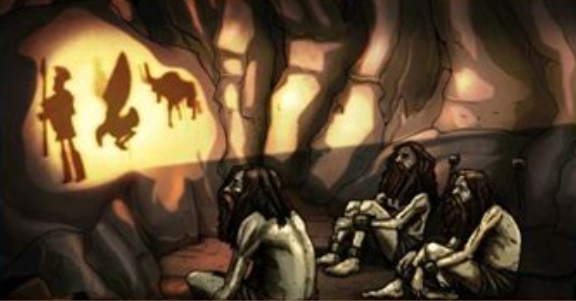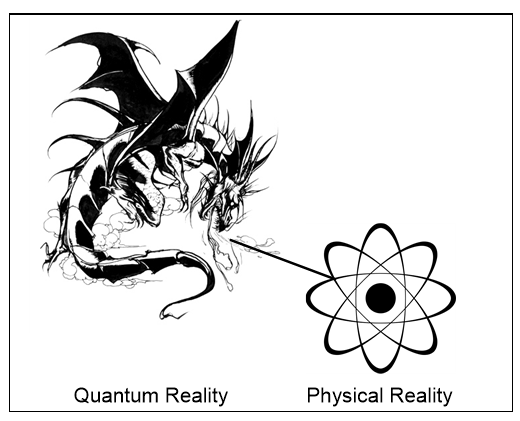
Plato’s cave is an allegory told over two thousand years ago (Figure 3.27). It describes human beings as like prisoners in a cave, chained with their backs to the entrance through which sunlight streams. They can’t see the sunlight, only the shadows it casts on the cave wall, so they take them as real, and act accordingly.
Today, we see ourselves standing in the sunlight of science before a dark cave of quantum mystery, but according to Plato, it is the other way around. We are still in the cave of materialism calling the shadows we see real. And quantum theory supports Plato, as it implies that we observe images generated by the quantum sunlight on the wall of space.
Quantum theory reinvents Plato’s vision in scientific terms. The big bang of physics was brighter than any star but the sun is a good analogy. If Plato’s cave is our universe, its walls are our space, and the chains that bind were made by evolution. This is no contrived puppet-show, as our shadows add to the show, and the prisoners aren’t just us, but everything that observes. Plato’s cave is then an allegory of what quantum theory is telling us today.
Why then don’t we turn from the shadows, to see their cause? Einstein tried but the quantum sunlight baffled him, so he concluded that it was nothing. Bohr tried too, but his impenetrable Copenhagen suit only showed reflected shadows, so he concluded it was unreal. Physicists then quarantined the quantum light behind a wall of equations that only they could read, and used it without looking at it. The first rule of the quantum club became that it is about nothing, as there is no quantum light say those who use it to predict our shadow future.

Yet some still tried to envision it. The physicist Wheeler called quantum reality the great smoky dragon (Wheeler, 1983), as it was both powerful and mythical. But if the quantum dragon is real, the world we see is its smoke (Figure 3.28). The quantum world then isn’t a shadow world beyond physical reality, but the real world whose shadows are the physical world we see.
Table 3.3 compares quantum realism and physical realism for light, but if our universe began as light, how did matter arise? The next chapter addresses this question.